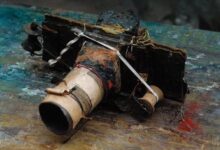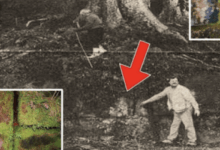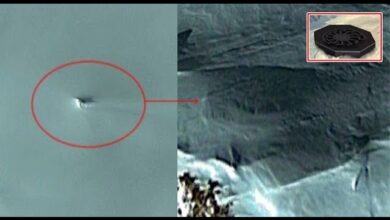Joe Rogan Shocked By What’s Happening On North Sentinel Island
North Sentinel Island: The Last Isolated Tribe and the Tragic Death of John Allen Chau
Nestled in the vast expanse of the Bay of Bengal, North Sentinel Island emerges like a land forgotten by time—a pristine and forbidden paradise untouched by the currents of modernization. On this small island of about 52 square kilometers lives one of the last remaining communities on Earth that has completely rejected contact with the outside world: the Sentinelese. They are a living embodiment of a prehistoric past that still survives today. This very isolation has drawn global attention, especially after the tragic death of American missionary John Allen Chau—an incident widely covered by the media and discussed by public figures like Joe Rogan.
The Encounter That Led to Tragedy
John Allen Chau, a 26-year-old Christian missionary, firmly believed his life’s mission was to bring Christianity to all peoples, even those entirely unfamiliar with modern civilization. Despite strict bans by the Indian government on accessing North Sentinel Island, Chau hired local fishermen to take him near the island. He made several attempts to reach the Sentinelese via kayak in hopes of making peaceful contact.
According to a diary recovered after his death, Chau was fully aware of the danger and mentally prepared for martyrdom. In one of his final attempts to land, he was reportedly killed by arrows as soon as he set foot on the beach. His body was never retrieved. Indian authorities detained the fishermen involved, but ultimately abandoned any recovery efforts due to fears of violence and a desire to respect the tribe’s autonomy.
An Island Lost in Time
Though it lies only about 50 kilometers from Port Blair, the capital of the Andaman and Nicobar Islands, North Sentinel Island remains completely cut off from the rest of the world. Covered in dense forests, protected by coral reefs, and surrounded by white beaches, the island is a “natural fortress” that resists intrusion. The Indian government has declared it a tribal reserve and prohibits all entry within a 3-nautical-mile radius.
The Sentinelese still live by hunting and gathering—they hunt wild pigs, catch fish and sea turtles, gather forest fruits, and show no signs of using metal tools or modern technology. No biological surveys have been conducted, as any attempts at contact are met with violence.
Who Are the Sentinelese?
Their population is estimated to range between 50 and 200 individuals, based on satellite images and distant observations. They are of small stature and dark complexion, resembling other Negrito tribes in Southeast Asia. Their language is entirely unclassified and bears no known relation to other Andamanese languages. Remarkably, the tribe continues to survive and reproduce despite its extremely small population size—challenging scientific theories about genetics and community sustainability.
A History of Hostility and Contact
The first recorded observation of the island occurred in 1771, when an East India Company ship saw lights onshore. But it wasn’t until 1880 that direct contact was made under British officer Maurice Vidal Portman. He kidnapped six Sentinelese—two elders and four children. The adults soon died from illness, and the children were returned with gifts. This event may have left a deep scar on the tribe’s collective memory.
Subsequent tragic events include:
-
1896: An escaped convict drifted onto the island and was killed.
-
World War II: Japanese airmen who crashed nearby were killed while seeking refuge.
-
1974: A National Geographic film crew was attacked with arrows.
-
1981: The cargo ship MV Primrose ran aground near the island. The crew spotted armed islanders preparing to attack and were rescued just in time by helicopter.
-
2006: Two fishermen entered the restricted zone and were killed. Attempts to retrieve their bodies failed as helicopters were met with arrows.
India’s Shift from Contact to Respect
During the 1960s and 1970s, anthropologist T.N. Pandit led several “gift-dropping” missions in an effort to build trust. There were moments of hope, such as in 1991 when the Sentinelese accepted coconuts directly from a boat, but most encounters ended in rejection or aggression.
After the 2004 tsunami, aerial surveys confirmed the tribe had survived—one famous image shows a Sentinelese warrior shooting an arrow at a rescue helicopter. Since then, the Indian government has officially ended all contact efforts and adopted a “voluntary isolation” policy—no one is allowed near, and the tribe has full rights to defend itself.
Remote Observation: A Stable Society
Though direct contact is impossible, satellite and aerial imagery suggests the Sentinelese community remains stable. Fires are lit regularly, basic structures are maintained, children are visible, and footpaths are evident. There is no sign of metal tools, modern clothing, or imported goods—indicating their culture remains entirely untouched by external influences.
Conclusion: A Living Time Capsule or Something More?
The Sentinelese are not just an isolated community. They are a living symbol of resistance, of self-determination, and of the ability to survive entirely outside the grasp of the modern world. To many, they represent a window into prehistory, a demonstration of sustainable living without technology, medicine, or globalization. To others, they are a moral reminder of the limits of intervention, missionary work, and the notion of “civilizing” others.
While debate continues, one thing remains clear: the Sentinelese have chosen their way of life, defended it, and thrived to this day—without anyone’s help. Perhaps the greatest respect humanity can offer… is to leave them alone.




